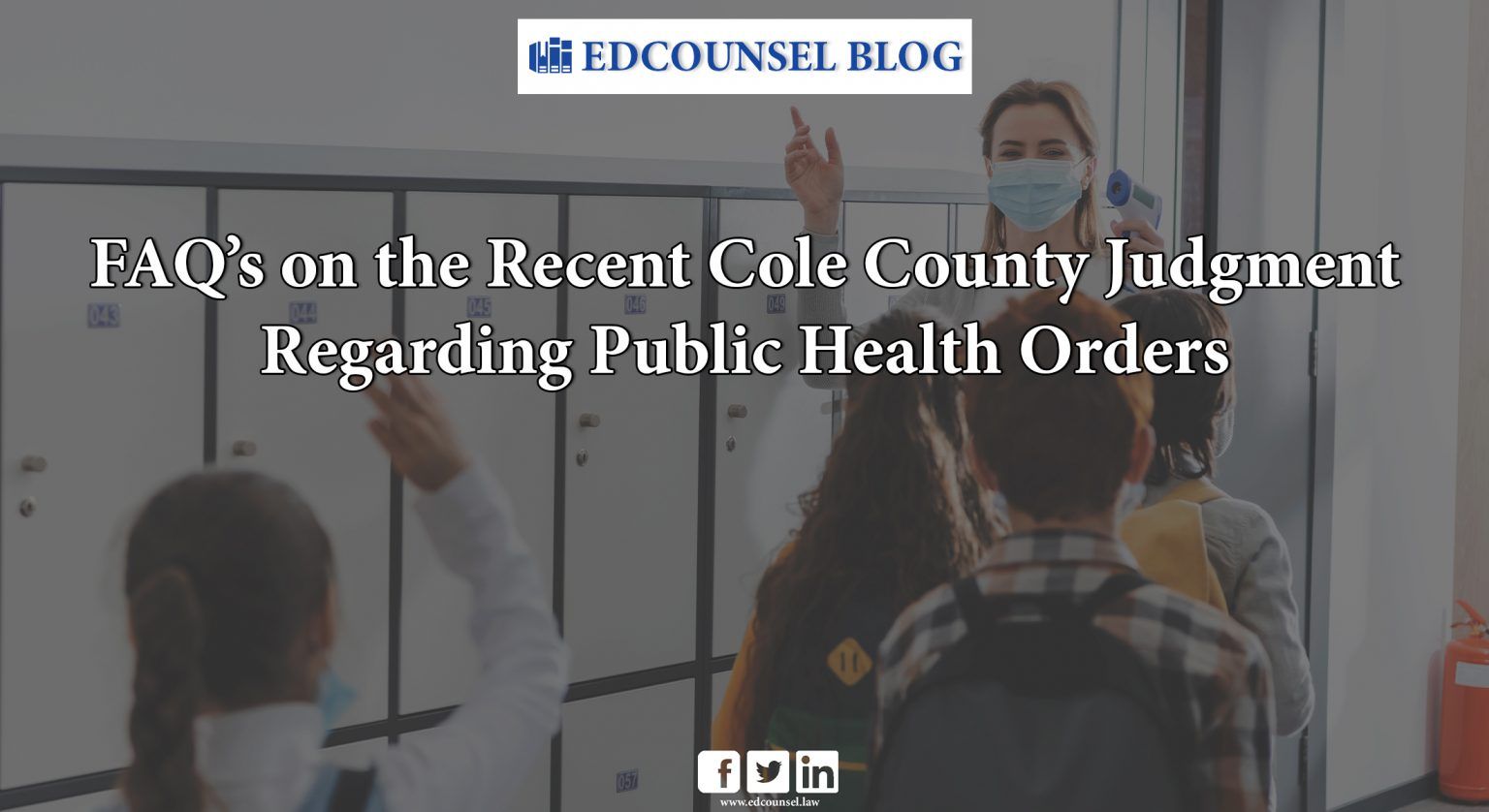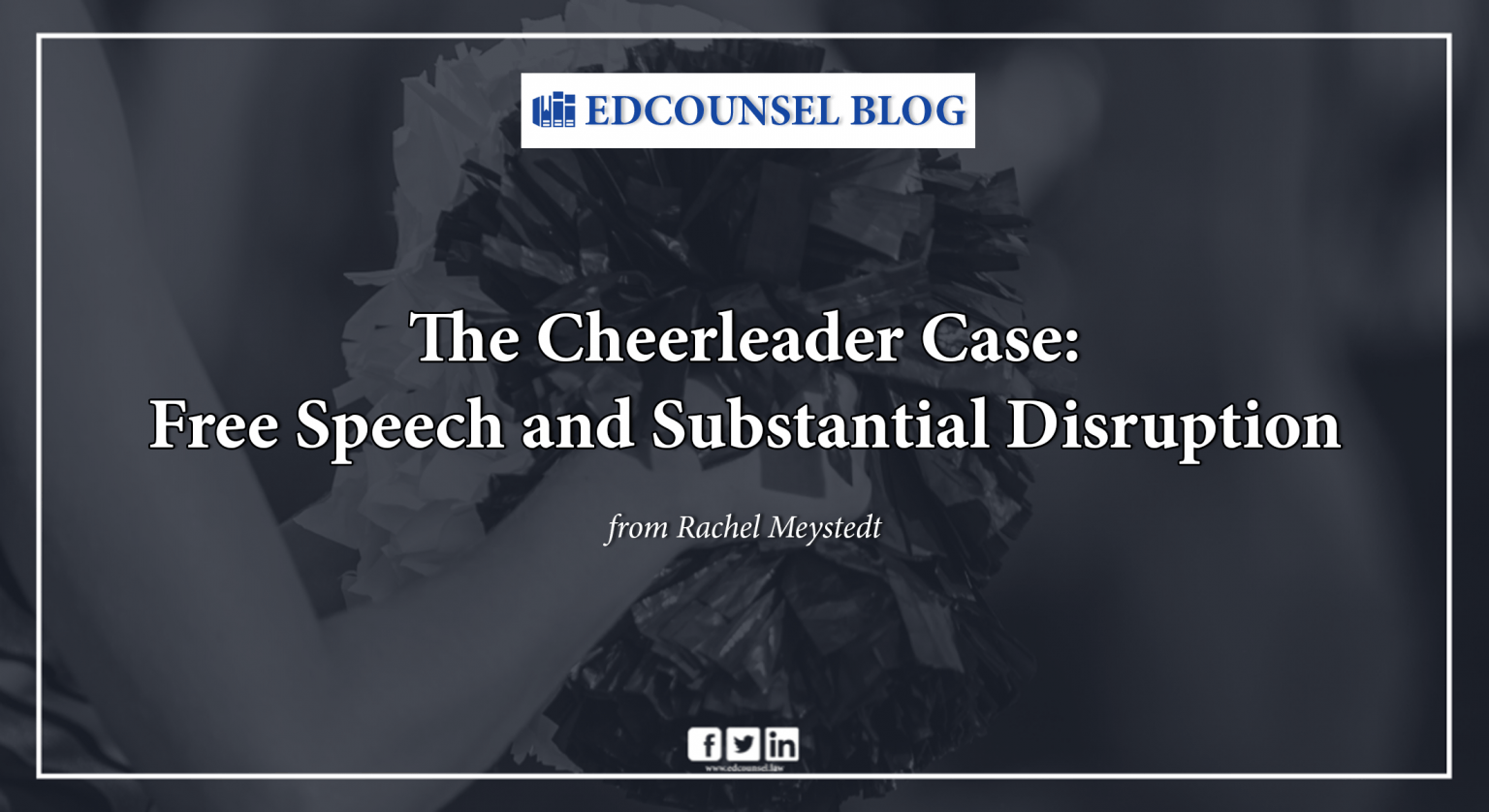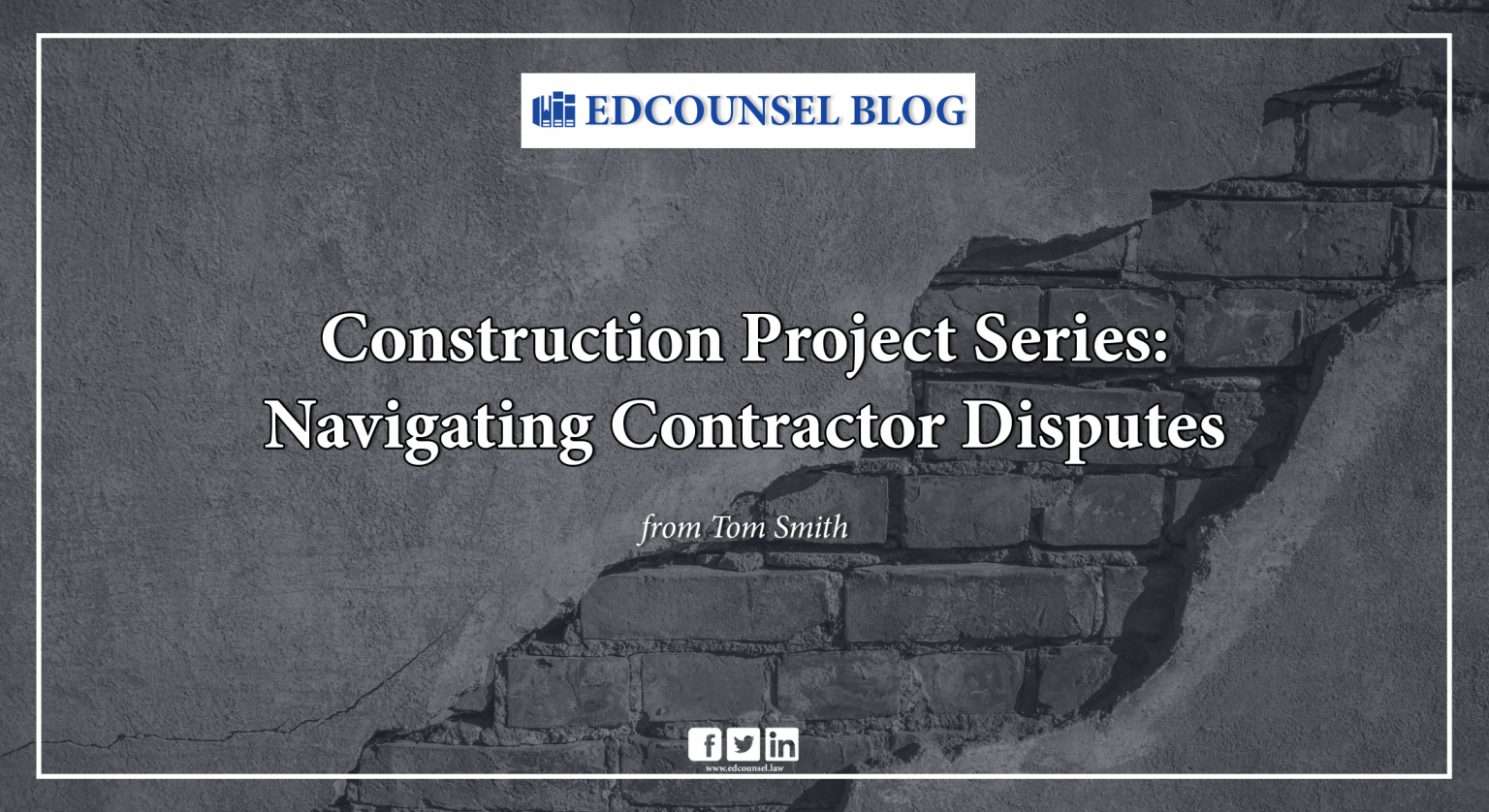
This blog post is the fourth in EdCounsel’s series on construction projects and will discuss strategies for dealing with disputes that may arise between a district and its contractor during the construction process.
Construction projects are complicated. That is just a fact – no matter how small the project. It is only natural then for disputes to arise between a district and its contractor throughout the life of the project. How a district plans for and reacts to those disputes could make the difference between a successfully completed project and a construction nightmare. In this blog, we will discuss some strategies and options for handling these disputes so that your district’s project does not end up in limbo while disputes are handled in court.
The first and most important strategy a district can implement when it comes to construction disputes is to plan ahead by using detailed contract documents and having good communication with the contractor. Disputes most often arise when there is ambiguity in the project documents or little to no communication between a district and its contractor (or even adversarial communication). However, if a district is proactive in making sure both it and the contractor understands the contract documents and each party’s obligations, and that there is a clear, open, and professional line of communication between them both, then some potential disputes can be avoided before they even rise to the level of a dispute. This strategy will not prevent every dispute though, so we will also discuss ways a district can navigate these issues if a dispute does arise even after careful planning.
When a dispute arises, a district will first want to check the contract documents. Not only can the contract documents provide details on who is ultimately responsible for certain parts of the project, but quite often these documents will include a process to be followed when either party has an issue (or “claim”). This process will usually involve submitting the claim to the design professional for the project, who will evaluate all the available information and make a decision. From there, if a party disagrees with that decision, the contract documents will usually discuss that party’s available next steps. Because of this, a district will be best served by first knowing what the dispute resolution process is under the contract documents and what the last step will be (the “binding method of dispute resolution”) if an agreement cannot otherwise be reached.
Once the contract documents have been reviewed, it would also be helpful if a district discussed the issue with its design professional (usually an architect) and its legal counsel. At the very least, discussing the issue with these individuals will enable them to be updated on the situation and quickly provide additional assistance later in the process. However, oftentimes these individuals can provide a district with a better understanding of what the contract documents require, what options are available, and whether there is any merit to either party’s claims. This information can be critical as a district proceeds in attempting to resolve the dispute, whether that be through the process outlined in the contract documents or by alternative means.
Speaking of which, it can be beneficial for a district to consider alternative methods of resolving a dispute with a contractor. While the contract documents will usually have a process outlined for resolving disputes, that does not mean that the parties are limited to that process. If both parties agree, other avenues can be used to arrive at a mutually acceptable resolution. Some ideas for alternative resolution methods are outlined below:
- Negotiation: This method is exactly as it sounds – both parties will meet to negotiate a resolution. Some contracts may not include this step at all and instead opt for a more adversarial resolution process. As we stated earlier, though, good communication between the parties can be very beneficial, and this is a prime example of that. With good communication between a district and its contractors, the parties may be able to discuss the issue together and arrive at a mutually acceptable resolution without having to resort to other means. That resolution can then be memorialized through a change order.
- Mediation: Again, this method is fairly straightforward. It may even be required under the contract documents before either party can proceed to litigation. If not though, and the dispute appears to be one that could be resolved through mediation, then this method can be useful, cost-effective, and efficient in resolving disputes quickly.
- Surety Involvement: A claim on a contractor’s bond can be very costly to the contractor and something they will seek to avoid if possible. However, that does not mean that the surety on those bonds cannot be useful in helping to resolve disputes even if a claim is not filed. Surety companies can be invoked when there are disputes during the project and the contractor and district cannot resolve the disputes on their own. Sureties may be able to provide aid directly or at least suggest other possible ways of resolving the issue while minimizing the damages to everyone involved. In fact, contractors may be more willing to pursue alternative resolution methods or make compromises when the contractor’s surety is involved.
- Third-Party Expert: For issues that are more technical in nature, like unforeseen conditions or disputes involving the interpretation of drawings/plans, it may be useful to bring in a third-party expert. If both parties agree, this individual can use their expertise to provide an opinion on the dispute, or even provide a final decision on the matter to which both parties will be bound.
- Delayed Resolution: Sometimes a dispute can arise that does not require an immediate resolution. For example, a contractor may claim that it should receive additional time to complete the project because of a weather delay or similar cause. If the project is still in the early stages of construction, the decision of whether or not to award the extra time does not necessarily have to be made right away. Instead, the parties can agree to revisit the issue closer to the completion date stated in the contract documents. It may well be that the extra time the contractor wanted, and a district did not think was warranted, ends up not being needed. We do caution districts against using this method too often though, since it could result in substantial issues just being pushed off until later and both parties being less willing to compromise – especially if it appears that the project will be completed late or over budget.
All of these alternative methods can be used to help resolve disputes between a district and a contractor, and this is not an exhaustive list. There are many options available that are limited mainly by the parties’ creativity and willingness to resolve the situation. The main point to keep in mind is that a district and a contractor will not always be limited to the process contained within the contract documents. For some disputes, that process may work well; but for others, alternative options may have the best chance of an acceptable resolution.
Regardless of what method is chosen to resolve a dispute, it all starts with careful planning and good communication. These will help to avoid a large portion of disputes and increase the chances of reaching a resolution without resorting to litigation. When a dispute arises though, it will be important to ensure that your district has a good understanding of what the contract documents require, has discussed the issues with its design professional and legal counsel, and is willing to consider alternative resolution methods. To be clear, doing all of this may still result in a dispute with a contractor that cannot be resolved any other way than litigation; but these steps will provide the best chance of avoiding that result.
If your district is experiencing issues with its contractor, or just has a question about what to do if a dispute arises, one of the attorneys at EdCounsel will be happy to discuss this further with you.
Sign Up For Our Mailing List
We will get back to you as soon as possible.
Please try again later.
Recent Posts
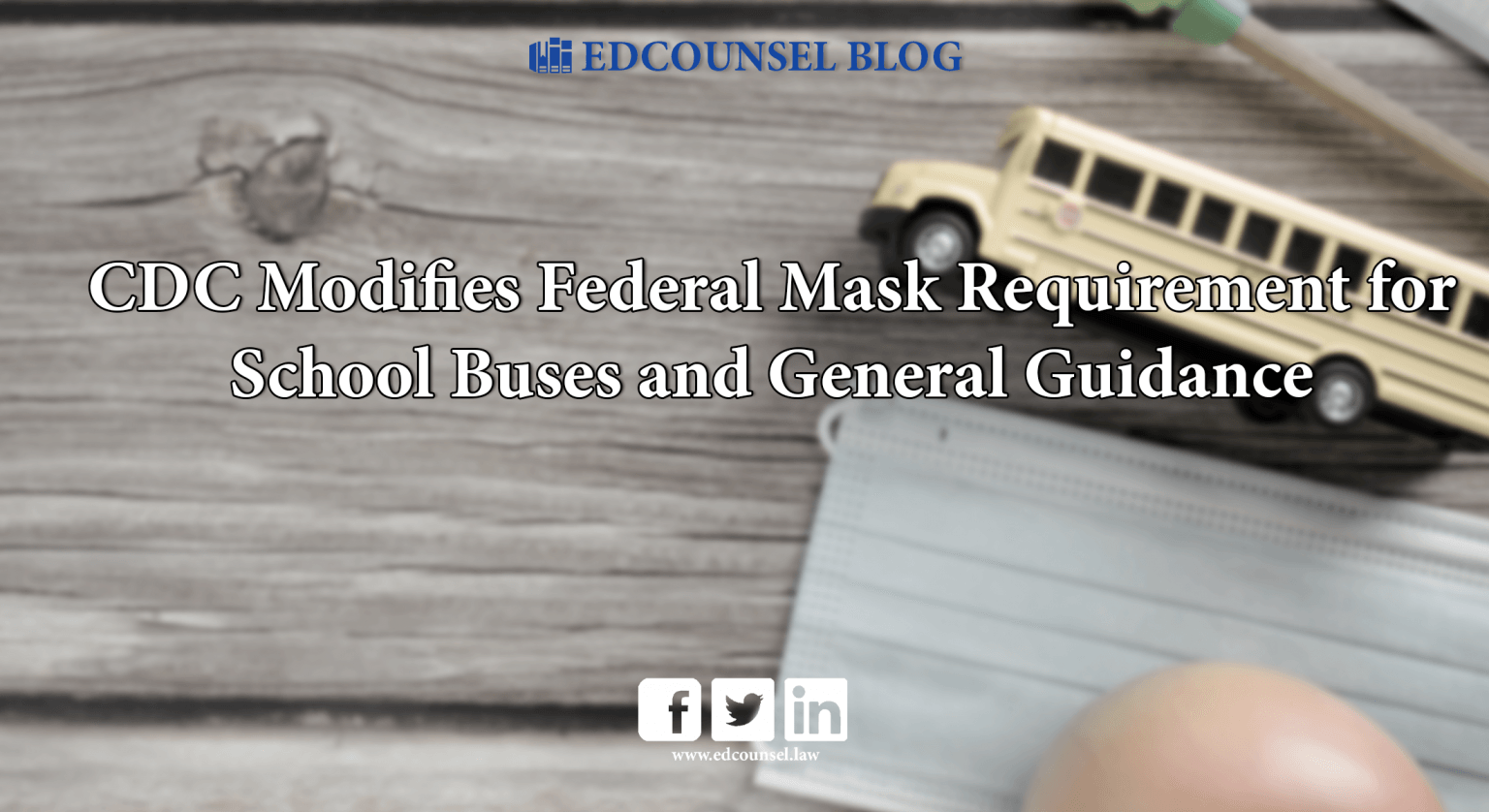
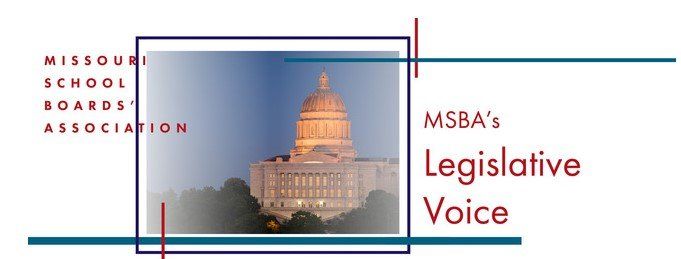
Columbia Office
Independence Office
Lake St. Louis Office
Springfield Office
2833 E. Battlefield Street
Suite B 100
Springfield, MO 65804
Fax: (816) 252-9009
HAVE AN INVOICE?
© Copyright 2024 EdCounsel, LLC
The choice of a lawyer is an important decision and should not be based solely upon advertisements.
